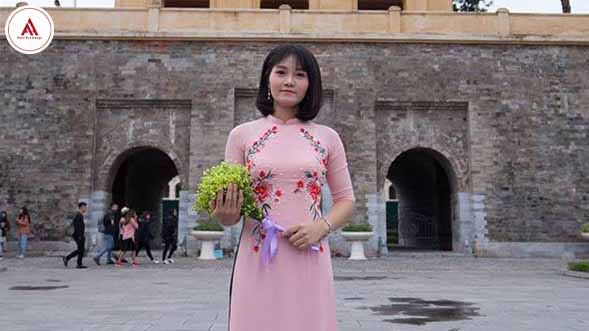3 bước xử lý dạng bài Describe A Photograph kèm một số bài mẫu hay vận dụng trong bài thi Speaking Part 2, Part 3
Describe A Photograph là dạng đề khá khó trong bài thi Speaking Part 2 và Part 3 vì không chỉ đơn giản tập trung miêu tả bức ảnh mà còn phải “kể” được câu chuyện từ bức ảnh đó. Làm thế nào để xử lý dạng bài Describe A Photograph một cách nhanh chóng? Áp dụng 3 bước dưới đây Anh ngữ Athena gợi ý, mọi câu hỏi liên quan đến Describe A Photograph đều trở nên dễ dàng!
Câu hỏi dạng đề Describe A Photograph trong Speaking Part 2, Part 3
Một số đề bài sẽ có yêu cầu trực tiếp, bắt đầu bằng cụm “Describe A Photograph” như:
- Describe a photograph that you have taken
- Describe a photograph that you like
- Describe a photograph about your family.
- Describe a photograph about your trip.
- Describe a photograph of your hometown.
Tuy nhiên bên cạnh đó, các đề bài khác đòi hỏi ứng viên cần phải có khả năng nhạy bén để nhận ra xem liệu đề bài có nằm trong dạng “Describe a Photograph” hay không. Ví dụ như:
- Describe a picture of you that you like.
- Describe a picture that you are proud of
- Describe a scenery that you have take photo of
Một số câu hỏi Part 3 khác liên quan đến chủ đề Describe A Photograph:
- What are the pros and cons of digital photography?
- Should people share their photographs online? Why/ Why not?
- Is it necessary to take a course to become a good photographer? Why/ Why not?
- Do you think people are taking too many photos these days?
- What kinds of photos do people like to take?
- Do you think people take more photos now than in the past?
- Do you think equipment is important for photography?
- Do you think being a professional photographer is a good job? Why?
- Why do some people like to post their photos on social media?
Tìm hiểu thêm: IELTS Speaking Part 3: Hướng dẫn chi tiết cách trả lời + bài mẫu theo từng chủ đề
Các bước xử lý dạng bài Describe A Photograph

Các bước xử lý dạng bài Describe A Photograph
Điều quan trọng nhất khi giải dạng đề Describe A Photograph là người học cần rèn luyện cách tư duy để có thể kể câu chuyện, thay vì đơn thuần mô tả những gì xuất hiện trong bức ảnh. Người học có thể tham khảo các bước xử lý dạng bài Describe A Photograph dưới đây để phần Speaking của mình không còn quá khô khan.
Bước 1: Đề cập đến thời gian hoặc cột mốc chụp ảnh
Đây là một trong những bước xử lý dạng bài Describe A Photograph đầu tiên ghi điểm với giám khảo. Việc đưa ra mốc thời gian có thể giúp giám khảo hình dung thời điểm và tình huống xảy ra khi bức ảnh được chụp. Ngoài ra, đôi khi các mốc thời gian cũng là cái cớ để người thi dẫn đến những lý do đặc biệt liên quan đến ảnh: ví dụ nếu thời gian chụp là Tết, mọi người thường sum vầy bên nhau, người thi có thể lấy cột mốc này làm lý do vì sao trong ảnh có nhiều người.
Sử dụng một số cấu trúc sau để nhắc đến thời điểm chụp ảnh:
- "This is a photograph taken on..."
- "In this photograph, we can see a moment from the day..."
- "The photo was captured during a morning/evening/afternoon/night on..."
Hoặc người thi có thể nói chính xác thời gian:
- "On the 15th of May, 2023..."
- "On a sunny morning as the sun was rising on July 10, 2022..."
Một số sự kiện liên quan đến thời gian:
- "At this moment, people were gathered for an evening birthday party..."
- "The photo was taken as the sun was slowly setting over the sea..."
Tìm hiểu thêm: Hướng dẫn chi tiết cách trả lời dạng bài IELTS Speaking Part 2 Describe a place [kèm bài mẫu tham khảo]
Bước 2: Mô tả trình tự các chi tiết xuất hiện trong bức ảnh
Sau khi đề cập đến thời gian và sự kiện liên quan, thí sinh chuyển sang mô tả các chi tiết trong bức ảnh mà mình đề cập đến. Có 2 cách để mô tả bức ảnh: Theo thứ tự từ phông nền đến chủ thể hoặc theo thứ tự vị trí (trái sang phải/ trên xuống dưới,..).
- Theo thứ tự từ phông nền đến chủ thể
- Bắt đầu với việc mô tả không gian xung quanh chủ thể chính hoặc bối cảnh tổng thể của bức ảnh.
Ví dụ: "The background of this photograph is a beautiful, tranquil beach with soft, golden sands stretching as far as the eye can see. The clear blue sky overhead is free of clouds, and the sun casts a warm, inviting glow over the entire scene."
- Sau khi đã mô tả phông nền, tiếp tục mô tả người hoặc vật thể chính trong bức ảnh. Hãy tập trung vào chi tiết về chủ thể, kích cỡ mà chúng chiếm trên bức ảnh (ở đây có thể là người hoặc vật).
Ví dụ: "The main subject in the photograph is a young woman standing in the center of the frame. She is holding a bouquet of vibrant, red roses and is dressed in a flowing white summer dress that contrasts beautifully with the blue sky and golden sands. Her bright smile and the joy in her eyes make her the focal point of the image."
- Sau khi đã mô tả phông nền và chủ thể chính, thí sinh có thể tiếp tục mô tả các yếu tố khác trong bức ảnh, chẳng hạn như các đối tượng phụ, sự kiện, hoặc chi tiết thú vị khác như màu sắc, ánh sáng của bức ảnh.
Ví dụ:"In addition to the main subject, there are a few other interesting elements in the photo. To the left, there's a small picnic setup with a checkered blanket and a basket of fruits. In the distance, you can spot a sailboat gracefully gliding on the calm, azure waters. These elements add to the overall sense of a perfect summer day by the beach."
- Theo thứ tự vị trí (trái sang phải/ trên xuống dưới,..)
- Trái sang phải (Left to Right):
Ví dụ: "Starting from the left side of the photo, there is a small wooden hut with a thatched roof. Moving to the right, there is a winding path that leads to the center of the frame."
- Từ trên xuống dưới (Top to Bottom).
Ví dụ: "Beginning at the top of the image, there is a clear, blue sky with a few seagulls soaring high above. As we move downwards, we come to a lush green forest with tall trees."
- Từ phía trước ra phía sau (Foreground to Background): Mô tả từ những chi tiết gần nhất (phía trước) trong bức ảnh và sau đó dần dần di chuyển đến những chi tiết ở phía xa hơn (phía sau).
Ví dụ: "In the foreground of the image, there are two people sitting on a colorful beach towel. As we move towards the background, we can see a vast, shimmering ocean."

Mô tả trình tự trong dạng bài Describe A Photograph
Bước 3: Nêu cảm xúc hoặc kỷ niệm gắn liền với bức ảnh trên
Đừng nên chỉ tập trung vào việc mô tả chi tiết từng vật thể xuất hiện trong ảnh, thí sinh cần có sự lồng ghép khéo léo về mặt cảm xúc để phần Speaking trở nên mượt mà và gây ấn tượng với giám khảo hơn. Bạn có thể nói về cảm giác thoải mái, sự kỳ diệu, bình yên hoặc bất kỳ cảm xúc nào bạn cảm nhận, từ đó khiến cho câu chuyện trở nên cá nhân hơn!
Nếu có thể, hãy cố gắng kết nối bức ảnh với kỷ niệm cá nhân của mình.
Ví dụ: I didn’t even realize until I got home what happened, but the whole experience stuck in my mind. The photo is now printed and framed on my wall so that I never forget the feeling of being among such incredible animals in a place of such natural beauty.
Một số bài mẫu tham khảo dạng bài Describe A Photograph
Dạng bài "Describe A Photograph" trong IELTS Speaking mặc dù có vẻ dễ hiểu nhưng thực tế chủ đề lại rất đa dạng và gây rối cho người học. Dưới đây là một loạt các bài mẫu tham khảo cho Part 2 và các câu hỏi cho Part 3 mà Athena tổng hợp được, giúp bạn tự tin hơn trong việc chinh chiến dạng câu hỏi này tại các kỳ thi IELTS.

Bài mẫu tham khảo dạng bài dạng bài Describe A Photograph
Bài mẫu thông dụng Part 2 IELTS Speaking Describe A Photograph
Describe a photo that makes you feel happy.
You should say:
- when and where you took the photo
- what the photo is like
- how often you look at the photo
- And explain why it makes you feel happy.
Sample Answer:
The photo I want to talk about is a picture taken on a beautiful morning in the park just outside the gate of my high school. I took this photo on a spring day the year before I graduated and moved on to college.
The photo has a beautiful and refreshing view of the park. The sun is rising with warm golden light, making everything in the picture appear radiant. The lush green grass, budding trees, and colorful flowers create a very appealing scene. In the photo, I also see a few close friends of mine, laughing and enjoying the moment in the sunlight.
I often look at this photo at least once a week. It is stored on my mobile phone, and I usually glance at it when I'm feeling stressed or bored. Whenever I look at the picture, it brings back memories of my high school days when I could meet friends, enjoy a carefree life, and engage in various fun activities.
This photo is a precious source of inspiration for me because it reminds me of wonderful memories from the past and the close friends I've made. It makes me feel happy and grateful for the beautiful moments in life that we can create and preserve. This picture is a permanent memento of my school days, and the joy it brings is always there to uplift me when I need it.
Describe a photograph of you that you like.
You should say
- where the photo was taken
- what you were doing when it was taken
- who took it
- and explain why you like the photo.
Sample Answer:
The photograph I'd like to describe is one that holds a special place in my heart. It was taken during a family vacation at the Grand Canyon, a breathtaking natural wonder in the southwestern United States.
The moment captured in the photograph was when I stood at the edge of the Grand Canyon, gazing out at the vast expanse of the canyon, with the Colorado River winding its way at the bottom. I was in complete awe of the magnificent scenery before me. The clear blue sky contrasted with the vibrant red and orange hues of the canyon's rocks, creating a mesmerizing view.
The photograph was taken by my father. He had a keen eye for photography and always had his camera ready to capture memorable moments during our family trips. In this particular instance, he urged me to stand at the viewpoint to capture the immense scale and beauty of the Grand Canyon.
I cherish this photograph for several reasons. Firstly, it reminds me of the incredible natural beauty and the sense of wonder that the Grand Canyon evokes. Secondly, it signifies a special bonding moment with my father as he encouraged me to appreciate the world's marvels. Lastly, this photograph encapsulates the joy of exploration and the adventures we experienced as a family. Every time I look at it, I am transported back to that incredible vacation and am reminded of the importance of family, nature, and exploration in my life.
Describe a photo you have taken. You should say:
- Where you took it
- When you took the photo
- What/ who is in the photo
- How you felt about the photo.
Sample Answer:
I'd like to describe a photograph that I took during a memorable trip to Paris, France. This picture was captured at the iconic Eiffel Tower.
I took this photo on a beautiful summer afternoon a couple of years ago. The clear blue sky provided a perfect backdrop to showcase the Eiffel Tower in all its splendor. I was standing on the Champ de Mars, a large public greenspace in front of the tower, which offered an excellent vantage point.
In the photograph, the Eiffel Tower stands tall and majestic against the azure sky. Its intricate iron lattice structure is prominently featured, with visitors dotting the area around it. The sun was casting a warm, golden hue on the tower, which added to the charm. You could see people from all around the world taking photos, having picnics, and just enjoying the magic of Paris.
This photograph holds a special place in my heart because it captures a moment of pure wonder and admiration. The Eiffel Tower is an iconic symbol of Paris and an architectural marvel, and being able to stand there and take that photo was a dream come true. Looking at this picture, I'm transported back to that incredible trip, feeling the same sense of awe and amazement I felt when I was there. It's a memento of a beautiful day and an extraordinary experience that I will cherish forever.
Describe a family photograph you have.
- Where you took it
- When you took the photo
- What/ who is in the photo
- Do you like it?
Sample Answer:
I'd like to talk about a family photograph that has a special place in my heart. This photograph was taken in our backyard during a sunny summer afternoon a few years ago.
In the picture, my entire family is present. I'm in the center, surrounded by my parents, two younger siblings, and our beloved family dog. We were all wearing casual, comfortable clothing, which is characteristic of our relaxed family gatherings. My younger sister and brother were playing around, and our dog was sitting obediently by my side.
What makes this photograph truly special is the genuine happiness and togetherness it reflects. We are all smiling, caught in a candid moment of joy. It perfectly encapsulates the love and unity that exist within our family. It's a snapshot of a beautiful, carefree summer day where we spent quality time together, making memories.
I absolutely love this photograph. It's a visual reminder of the strong bond we share as a family. Whenever I look at it, it warms my heart and brings back those wonderful feelings of love and connection. It's not just a picture; it's a cherished memory frozen in time, and I couldn't ask for a better representation of my family's happiness and love for one another.
Bài tham khảo liên quan đến Part 3 Describe A Photograph
Sample Answer:
- What are the pros and cons of digital photography?
Digital photography has its share of pros and cons. On the positive side, it offers instant results, allowing you to review and retake photos on the spot. It's cost-efficient, as there are no film or development expenses. Editing and enhancing photos is a breeze, and digital storage and sharing are convenient. Moreover, it has a smaller environmental footprint due to the elimination of chemical waste and paper usage.
However, digital photography also has its drawbacks. The initial cost can be high for quality equipment. It may lead to over-reliance on technology and less attention to getting the shot right in-camera. Managing large photo collections can be challenging due to storage issues. Some argue that digital lacks the distinct aesthetics of film. Privacy concerns have arisen with the ease of taking and sharing photos without consent. In conclusion, digital photography offers convenience but comes with its own set of challenges and considerations.
- Should people share their photographs online? Why/ Why not?
Sharing photographs online is a topic that presents both advantages and potential drawbacks. On one hand, it can be a valuable way for people to connect, express themselves, and preserve memories. Online platforms offer the means to engage with friends and family, particularly when separated by physical distance. It's also a creative outlet for many, allowing individuals to showcase their experiences and artistic work. Furthermore, it can lead to networking and professional opportunities, especially for photographers and artists seeking exposure.
However, there are significant concerns associated with sharing photographs online. Privacy is a fundamental issue, as it's challenging to control who can access and use the images once they're posted. There's a risk of unwanted intrusion and misuse of personal photos. Security is another concern, with the potential for hacking or identity theft. Over-sharing can affect the authenticity of experiences, as some individuals prioritize posting photos over enjoying the moments themselves. Copyright and ownership issues can also arise, as images can be easily duplicated and used without permission.
In conclusion, whether people should share their photographs online is a matter of personal preference, objectives, and awareness of the associated risks. It can be a positive means of connection, self-expression, and memory preservation, but it requires careful consideration and safeguards to protect one's privacy and security in the digital realm.
- Is it necessary to take a course to become a good photographer? Why/ Why not?
The necessity of taking a photography course to become a good photographer is a subject of ongoing debate in the photography community. It largely depends on an individual's learning style, resources, and goals.
Photography courses can offer valuable benefits. Firstly, they provide a structured environment for learning the technical aspects of photography, such as camera operation, composition, and lighting. This can be particularly useful for beginners who want to build a strong foundation. Secondly, courses often involve feedback and guidance from experienced instructors, which can accelerate the learning process and provide insights that self-learning might lack. Additionally, the networking opportunities within a course can be valuable for connecting with like-minded individuals and exploring professional avenues in photography.
On the other hand, it's not an absolute necessity to take a course to become a skilled photographer. Many successful photographers are self-taught, relying on books, online resources, and practice to hone their skills. The digital age has provided a plethora of resources for self-learners, including online tutorials, YouTube channels, and photography communities. Moreover, photography is a form of art, and some argue that too much formal education may stifle creativity and personal expression.
In conclusion, the choice of whether to take a photography course should depend on an individual's learning preferences and goals. While formal education can offer structure and guidance, it is not the only path to becoming a proficient photographer. Self-learning remains a valid and accessible route for those who are dedicated and resourceful.
- Do you think people are taking too many photos these days?
The proliferation of photography in today's digital age has indeed led to a surge in the number of photos being taken, and this phenomenon raises several important considerations.
Firstly, the accessibility of smartphones and digital cameras has made photography incredibly convenient, leading people to capture moments from their daily lives more frequently. This, in turn, contributes to the accumulation of photos. Additionally, social media platforms encourage users to document and share their experiences through images, which fuels the desire to take more photos. The desire to maintain a digital record of life events, no matter how mundane, also contributes to this trend.
However, the rapid increase in photo-taking can have both positive and negative implications. On one hand, it allows people to chronicle their lives and express creativity. It also fosters communication and connection, as images can convey emotions and experiences effectively. On the other hand, overexposure to photography can detract from living in the moment. Some individuals become so preoccupied with taking photos that they may not fully engage in and appreciate the experiences they are capturing.
In conclusion, while the prevalence of photography has led to an abundance of photos being taken, whether this is excessive or not depends on individual preferences and how one balances the act of documenting life with living it. The key is to strike a balance between capturing memories and being fully present in the experiences themselves.
- What kinds of photos do people like to take?
People tend to enjoy taking a wide range of photos, including travel shots, images of family and friends, selfies and portraits, food and culinary creations, nature and wildlife, photos from special events, and artistic and creative photography. These categories reflect individual interests and capture meaningful moments in people's lives.
- Do you think people take more photos now than in the past?
People are taking more photos today than in the past. With the widespread availability of smartphones equipped with high-quality cameras, taking photos has become incredibly convenient and accessible. We now have the means to capture moments from our daily lives with ease, and social media platforms further encourage us to share our experiences through images. This instant sharing has amplified the desire to take more photos. In contrast, in the past, film cameras and the associated costs and limitations meant that people were more selective in what they chose to photograph. Therefore, the accessibility of digital photography and the influence of social media have undeniably led to an increase in the number of photos being taken.
- Do you think equipment is important for photography?
In my opinion, equipment plays a significant role in photography, but its importance can vary depending on the context and the photographer's goals. High-quality equipment can undoubtedly enhance the technical aspects of photography, such as image sharpness, clarity, and low-light performance. Professional cameras, lenses, and lighting equipment are essential for photographers who work in fields like fashion, advertising, or wildlife photography, where technical precision is crucial.
However, it's essential to note that equipment alone does not guarantee great photography. A skilled photographer can create compelling images with basic equipment, while an inexperienced photographer may struggle to capture outstanding shots with even the most advanced gear. Composition, creativity, and the ability to tell a story through photographs are equally, if not more, critical in achieving remarkable results.
Furthermore, modern smartphones with advanced cameras have made photography accessible to virtually everyone. They have reshaped the industry by showing that excellent photos can be taken with relatively simple and portable equipment. In this sense, the importance of equipment for photography has evolved over time.
So, while equipment can significantly influence the technical aspects of photography, a photographer's creativity, skills, and vision ultimately play a more substantial role in producing exceptional photographs.
- Do you think being a professional photographer is a good job? Why?
In my view, being a professional photographer can be a fulfilling and rewarding career for several reasons. Firstly, it allows individuals to combine their passion for visual art and creativity with their profession, which can lead to a highly satisfying work-life balance.
Secondly, professional photography offers the opportunity to explore a wide range of genres and niches, from portrait photography to nature, wildlife, and fashion photography. This diversity enables photographers to continually learn and adapt their skills, preventing monotony in their work.
Additionally, the demand for professional photographers remains relatively stable, as there is a constant need for their services in various industries. This ensures a degree of job security and income stability.
Furthermore, professional photographers have the chance to capture and document significant events and moments in people's lives, preserving memories for generations. The emotional and personal satisfaction derived from this aspect of the job can be immensely gratifying.
Lastly, the profession offers the potential for financial success, especially for those who establish themselves as experts in their chosen niche and build a strong clientele.
However, it's important to acknowledge that the profession can also be challenging. The industry can be highly competitive, and establishing a successful photography business often requires substantial effort and dedication. It may involve working irregular hours, dealing with client expectations, and investing in expensive equipment.
In conclusion, being a professional photographer is a good job for those with a passion for visual storytelling and creativity. It offers opportunities for personal and professional growth, the chance to capture meaningful moments, and the potential for financial success. However, it comes with challenges that individuals should be prepared to overcome to thrive in this profession.
- Why do some people like to post their photos on social media?
Many people enjoy posting their photos on social media for several reasons. Firstly, it provides a platform to share and document their life experiences with friends and family. Social media allows them to keep loved ones updated on their activities, travels, and important life events, even when separated by geographical distances.
Secondly, it's a means of self-expression and self-promotion. People can use their photos to convey their personality, interests, and style. They can curate their online identity, choosing which aspects of their life to showcase and how they want to be perceived by their online audience.
Thirdly, the validation and social interaction that come from sharing photos are appealing. Likes, comments, and positive feedback on their posts can boost self-esteem and provide a sense of connection and community. This can be particularly important for individuals seeking social affirmation and recognition.
Additionally, social media provides a platform for creative expression and art. Many people use it to share their photography skills, artistic creations, or personal projects, allowing them to reach a broader audience and receive constructive criticism or praise.
Lastly, the ease of sharing on social media makes it a convenient way to keep a visual diary or archive of one's life. People can look back at their old posts and reminisce about past experiences, creating a digital timeline of their personal history.
Overall, posting photos on social media serves various purposes, from staying connected with loved ones to self-expression and creative sharing, making it a popular activity in the digital age.
Tổng kết
Trên đây là 3 bước chính để xử lý dạng bài Describe A Photograph cũng như một số đề bài, câu hỏi mẫu xuất hiện nhiều trong chủ đề này mà Athena muốn giới thiệu. Mong rằng thông qua việc đọc bài viết, người học có thể trang bị đầy đủ kiến thức để tự tin trong các kỳ thi IELTS trong tương lai.
Để có thể giúp người học “master” dạng bài Describe A Photograph, Athena cho ra mắt khóa học IELTS toàn diện từ 0 đạt 6.5-8.0+ giúp bạn nâng band 4 kỹ năng nhanh chóng và đạt được điểm cao đối với bài thi Describe A Photograph. Một số những lợi ích nổi bật tại Athena:
- Lộ trình học “tối giản”, “tối ưu” giúp bạn nắm vững kiến thức cơ bản, và nắm chắc tấm bằng IELTS 6.5-8.0+ trong tầm tay.
- Giáo trình và phương pháp được chính Ths. Đỗ Vân Anh (8.5 IELTS với 10 năm kinh nghiệm giảng dạy TOEIC/IELTS) biên soạn và giảng dạy trực tiếp.
- Học phí “nhẹ ví” với các bạn sinh viên: Khóa IELTS từ mất gốc đến 6.5-8.0+ tại Athena là lựa chọn phù hợp với các bạn sinh viên mong muốn sở hữu tấm bằng IELTS với chi phí thấp nhưng chất lượng cao. Ngoài ra, Athena còn trao học bổng định kỳ với các bạn đạt điểm IELTS như mong ước.

Xem thêm:
Bài mẫu IELTS Speaking Part 2 - Topic: Describe an occasion when you spent time with a young child
Cập nhật 10 đề thi mới nhất IELTS Speaking Part 2 Describe a person - hướng dẫn cách trả lời


![[Download PDF] “Lột xác” Writing với sách High-scoring IELTS Writing Model Answers](https://static.anhnguathena.vn/anhngu//img.media/2024/01/1704734749571.png)







